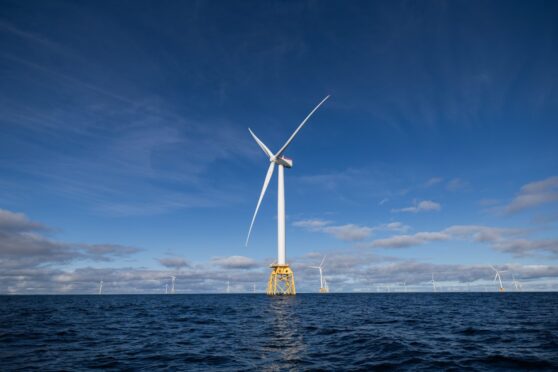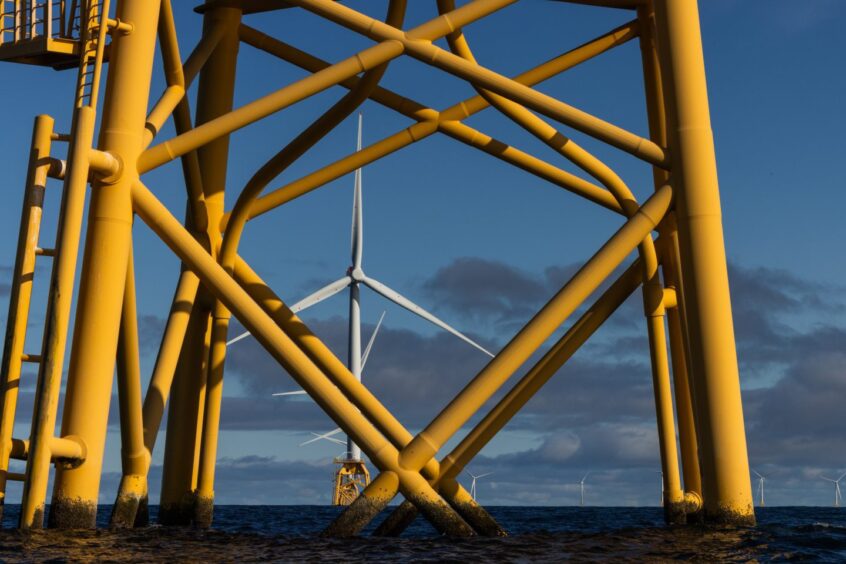The next few years are a defining time for Scotland’s economy as we transition from using traditional fossil fuels for our energy requirements to building and using new sources of green energy, such as offshore wind, hydrogen and clean heat.
-
Some Press and Journal online content is funded by outside parties. The revenue from this helps to sustain our independent news gathering. You will always know if you are reading paid-for material as it will be clearly labelled as “Partnership” on the site and on social media channels.
This can take two different forms.
“Presented by”
This means the content has been paid for and produced by the named advertiser.
“In partnership with”
This means the content has been paid for and approved by the named advertiser but written and edited by our own commercial content team.
Scotland aims to be a global player in these emerging energy markets. This will bring employment, develop innovation in products and services, and offer supply chain opportunities for manufacturing and services companies.
Indeed, there is no doubt the coming years offer a once in a generation opening for entrepreneurs and innovators to seize the moment and help transform the Scottish economy.
Scotland’s industry can take full advantage of the gains
In the global race to net-zero, offshore wind is one of the energy transition markets that has the potential to bring billions of pounds of investment into Scotland. This new sector can be tricky to navigate, so how can Scotland’s industry take full advantage of these gains?
Scottish Enterprise, Scotland’s national economic development agency, is perfectly placed to provide insight and access to specialist professional support for the offshore wind sector.
Jamie Sansom, strategic lead for offshore wind at Scottish Enterprise, explained how his team is assisting Scottish SME’s in understanding the scale of the opportunity. He said: “It’s difficult to overestimate the growing global demand for offshore wind – and its potential to transform the Scottish economy.
“For my team of industry experts at Scottish Enterprise, the key to success is understanding and anticipating what the market will look like in the years ahead and ensuring that businesses across Scotland can take full advantage of the opportunities that already exist in this vibrant sector. We want to enable Scottish firms to grow their market share and open up new lines of business.”
Helping businesses identify opportunities in offshore wind
We spoke to Adam Swainbank, offshore wind supply chain specialist in the Scottish Enterprise team, who told us more. He said: “We’re finding that the offshore wind industry can be a very ‘noisy’ industry. There’s lots of different players and stakeholders. What we do is break the industry down into understandable segments.
“Many Scottish SMEs are busy doing their day job in other sectors. Often, they don’t have the bandwidth to recognise and understand the upcoming opportunities with offshore wind. You might be a small manufacturing company who can make a bolt or a gearbox component or a larger vessel services company providing maintenance capability, but you’ve just not had the opportunity to recognise how your company can get involved. That can be a job in itself, so we can help break it down for businesses.”
An example of this is the manufacturing factsheets created by Scotland’s enterprise agencies, which spotlight where manufacturing demand lies in the offshore wind sector. The sheets are packed with detailed information to provide manufacturers with insight into the components, scale, costs and capabilities that offshore wind presents over five key areas: secondary steel, anchor and mooring systems, cable protection systems (CPS), cables and accessories and corrosion protection systems.
Establishing competitive new supply chains
Adam explained: “We could find lots of headline figures on targets, gigawatts, projects etc, but very little on the breakdown of what needs to be manufactured. Scottish Enterprise worked with South of Scotland Enterprise and Highlands and Islands Enterprise to develop five manufacturing factsheets and then rolled them out over a number of workshops.”
Adam and the team at Scottish Enterprise are also focused on supporting innovation within offshore wind. As Adam points out, offshore wind is a relatively new industry and there is massive scope to establish new competitive and efficient supply chains.
“We let companies, both those already working within the energy sector and those working in other sectors, know where they might fit,” said Adam. “That gives them the opportunity to think about developing business plans and getting financial investment in place as projects start to develop, and we can support them with that.”
Adam says key to the work of the Scottish Enterprise offshore wind team is the partnership organisations it works closely with. As part of Offshore Wind Scotland, Scottish Enterprise partners with Highlands and Islands Enterprise (HIE), the Scottish Government, South of Scotland Enterprise and Scottish Offshore Wind Energy Council (SOWEC).
Interested in the energy transition supply chain? The Scottish Enterprise team can help you get started. Visit the Scottish Enterprise website to find out more.



Conversation